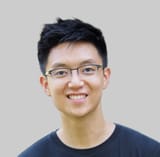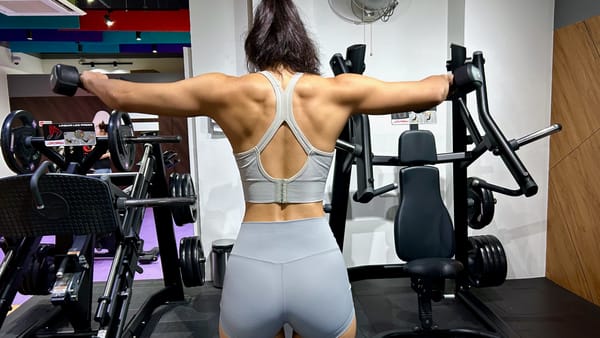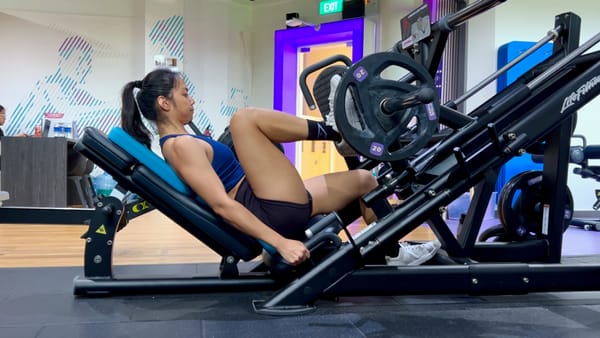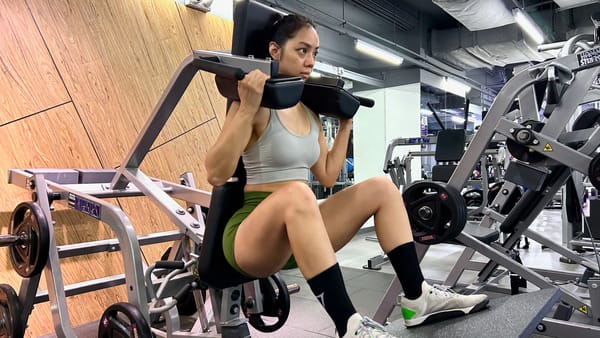Leg Curl vs Leg Extension: What’s the Difference?
Leg curl vs leg extension: how are these exercises different? Learn about this common confusion and why both of them are so important.
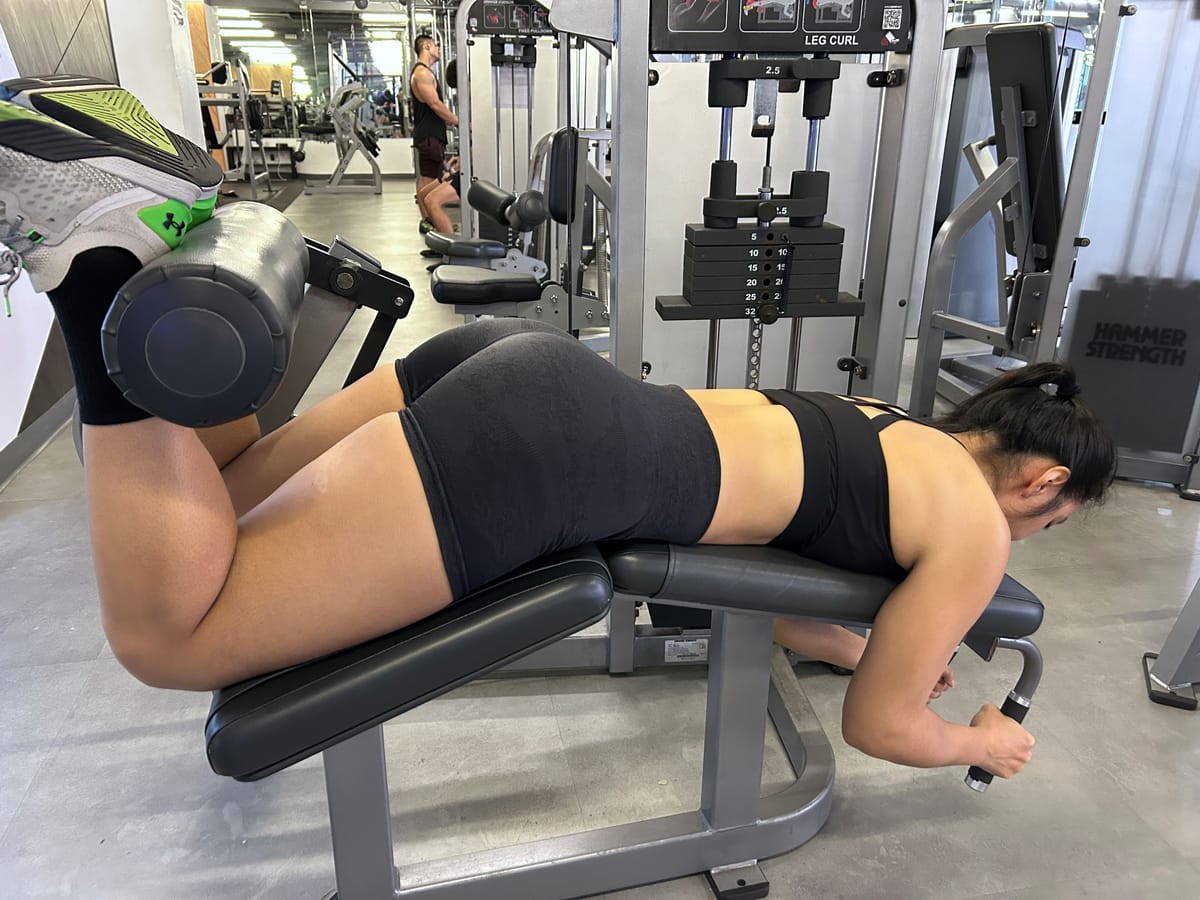
Just starting out at the gym and confused by all the machines available?
We’ve all been there.
And especially so when it comes to the leg curl and leg extension machines — they just look so similar.
Leg curl vs leg extension: a common confusion
Are they the same? What are they supposed to target? How do you even use them?
Don’t worry, everyone wonders the same when they’re new to the gym (even if no one dares to admit it).
You can get wiser about that here … in absolute privacy! No need to ask anyone and no risk to your reputation in the gym. 😎
Leg curl
Here’s what the leg curl (aka hamstring curl) looks like:

With the leg curl, think of it as:
- Scooping toward you with your legs
- Bringing your heels toward your butt
Trains your hamstrings through knee flexion
Targets hamstrings
The leg curl targets your hamstring muscles through knee flexion.
Knee extension refers to the straightening of the knee.
This makes it extra special when you’re trying to train your hamstrings in a comprehensive way.
You see, most hamstring exercises are based on hip extension.
Popular ones include Romanian deadlift (RDL), back extension, and good morning.
In comparison, working your hamstrings through knee flexion — like in the leg curl — is often overlooked.
For best results, you want to target your hamstrings through both knee flexion and hip extension.
Another way to think about this is where each exercise feels the hardest (i.e., resistance profiles):
- Leg curl: Hardest when the hamstrings are shortened
- RDL: Hardest when the hamstrings are lengthened
You want the hamstrings to work their hardest in different positions.
With very few options that can train the hamstrings through knee flexion, it’s no surprise that the leg curl is almost irreplaceable in any hypertrophy program.
How to include leg curl in training?
There are no hard and fast rules here.
But if you’re starting out, schedule the leg curl in the later parts of your workout.
Here’s why:
- You’ll be more fatigued later in the workout
- Leg curl is generally less demanding on technique
- Safer to go near failure than most hamstring exercises
- More opportunities to have fun with intensity techniques
2 types of leg curl machines
Depending on your gym, you might have one or both types of leg curl machines to work with.
Both are great options (with teeny-tiny differences that shouldn’t matter to most folks).
Seated leg curl
Here’s how to do the seated leg curl:
@kayleebull HOW TO USE THE SEATED LEG CURL MACHINE🙌🏼❤️ #gymtips #gymtipsforbeginners #beginnerworkout #fitnesstips ♬ original sound - kayleebull
The seated leg curl keeps your hips at about 90 degrees.
For many, this version of the leg curl is simpler to master and more intuitive.
Lying leg curl (Prone leg curl)
Here’s a tutorial on the lying leg curl:
@alicejanefitness Apply for my Training & Nutrition coaching programs ⬆️🍏 @ryderwear CODE:ALICE10 #hamstringworkout #hamstringcurl #gymmistakes #hamstringworkout #lyinglegcurls #lyinglegcurlmachinetutorial #Legcurltips #gymtips #fixyourform #glutesworkout #glutetips #glutegrowthtips #fixyourform #hamstringsworkout #hamstrings #growyourhammies #growyourhamstrings ♬ original sound - Alice Jane | Online Coach
The lying leg curl keeps your hips at about 30 degrees.
This version of the leg curl takes a little more time to master.
Tricky parts of the lying leg curl:
- Keeping hips steady on the pad requires practice
- Creating stable setup by pulling on handles to activate lats
- Controlling the eccentric portion well
Seated leg curl vs lying leg curl
Research suggests that the seated leg curl is better for hypertrophy than the lying leg curl.
Why’s that? It’s hypothesized that longer muscle lengths of the hamstrings in the seated leg curl (vs the lying leg curl) lead to greater hypertrophy.
That said, don’t abandon the lying leg curl.
It’s still good to train with different setups and angles if you want to maximize hypertrophy. (Remember: variety)
Smart thing to do? Include both the seated and lying leg curls, or mix them up in your training occasionally.
Alternatives to leg curl
Can’t get your hands (or should we say legs 😏) on the leg curl machine?
TBH, for a hamstring exercise focused on knee flexion, you don’t have too many options.
But these ones should work (albeit being slightly harder to progress on).
#1: Glute-ham raise
Here’s a lovely demo of the glute-ham raise:
@likeafoss HOW TO: The GHR Machine #glutehamraise #ghd #hamstringworkout #glutesworkout ♬ paramore still into you DISCO LINES REMIX - discolines
In case you’re wondering, the glute-ham raise is done on the GHD machine (short for: Glute Ham Developer).
Not a staple in every gym, but fun to work with if you can find one.
#2: Sliding leg curl
Great demo of the sliding leg curl (with modification tips):
@thedanahermethod These hamstrings slides can be tricky (as in hard AF). But when done (and progressed) safely they can be great for engaging the hamstrings. I teach these progressions in TDM classes to keep the work in the back of the legs and out of the low back. For the sliders I’m using wash cloths. Socks, blankets and actual sliders work too 😊 Check out the link in bio to access the Digital Library for a full hamstring workouts and more details on this move. #hamstrings #hamstringworkout #hamstringslides #hamstringsliders #sliders #lowimpact #lowimpacthighintensity #lowimpactworkout #ondemand #onlineworkout #thedanahermethod ♬ River Flows in You - Yiruma
The sliding leg curl has a very simple setup requiring minimal equipment. Perfect for home workouts.
Of course, this means you have fewer options for progressing.
#3: Nordic hamstring curl
One of the best Nordic hamstring curl tutorials:
The Nordic hamstring curl might look simple, but try it once and you’ll know why not many have the stomach for it. 🥴
This is a demanding movement, so build toward it with exercise progressions.
Seriously, the Nordic hamstring curl is humbling.
Leg extension
Here’s what the leg extension looks like:
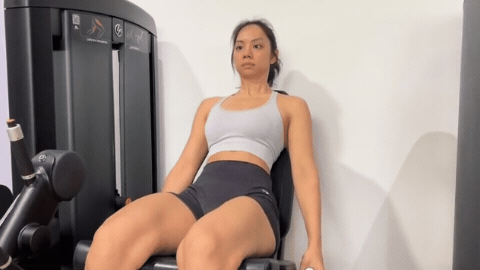
Think of the leg extension as:
- Kicking upward with your legs
- Getting your toes to point upward
Trains your quads
Targets rectus femoris better than squat
The leg extension targets your quad muscles, just like the squat.
But unlike the squat, the leg extension can train the rectus femoris effectively.
It’s one of the 4 quad muscles.
It’s a strip of muscle that runs across the front of your thigh.
It forms the bulk of the muscle on the front.
It runs all the from the hip to the knee joint.
You don’t want to neglect it. The rectus femoris is a highly visible muscle that contributes to the “peaks” on the front of your quads.
Curious? Learn why leg extensions can do what squats cannot:

Emphasizes shortened position
The leg extension exercise lets you focus on squeezing at the top position to get your quads to shorten as much as possible.
You can’t do that in a squat. Emphasizing the shortened position on a squat is impractical and possibly, dangerous.
🫣 Imagine squeezing your quads to their max at the top of every squat rep.
How to include leg extension in training?
Like the leg curl, there are no fixed formats here.
Just starting out? Schedule the leg extension in the later parts of your workout.
Here’s why:
- You’ll be more tired later in the workout
- Leg extension is generally less demanding on technique
- Safer to go near failure than most quad exercises
- More opportunities to have fun with intensity techniques
Alternatives to leg extension
For good alternatives to the leg extension, you want exercises with a similar profile.
This lets you target the rectus femoris that’s overlooked by squat-based exercises.
Here are the attributes to look out for:
- Constant hip angle throughout
- Hip and knee extensions don’t happen together
#1: Sissy squat
How to do the sissy squat (along with progressions):
@kimfrench87_ Ain’t nothing sissy about these 🔥 #sissysquat #quads #fyp ♬ I'm No Magician - Vincent & Love, Alexa
Here's a complete guide on the sissy squat:
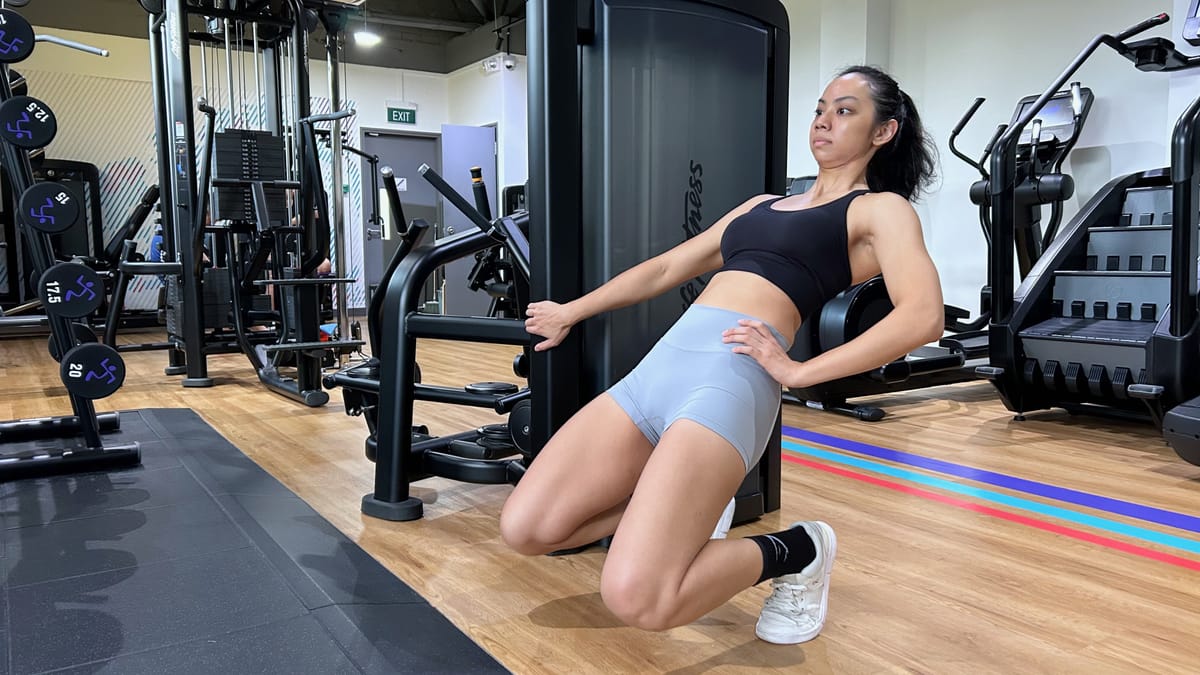
Want more stability? Try the Smith machine sissy squat:
@joey_celentano Smith machine sissy squats 🤫 #fyp #quads ♬ som original - Koyubi
Start slow and light with the sissy squat so you can get used to that massive stretch on your quads.
It’d be wise to ease into it with the progressions shown above.
Did you know there’s SO MUCH you can do with the Smith machine?:

#2: Reverse Nordic curl
The best tutorial on the reverse Nordic curl:
Take your time to work through the progressions for the reverse Nordic curl.
Got tight ankles? Work on your ankle mobility first. This helps you get comfortable with the plantar flexion needed.
Both are important for hypertrophy
Now that you know everything about leg curl vs leg extension, you can hit these exercises with absolute confidence.
(Just re-read this if you ever get confused again.)
What are you waiting for? Time to DESTROY your legs!
One thing to remember from this article? Both leg curl and leg extension complement the typical leg exercises we do for hypertrophy very well.
That’s why they’re a staple in almost every hypertrophy program.

